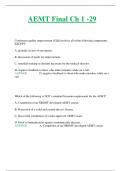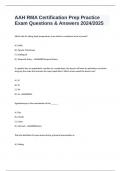College aantekeningen
The Neoplastic Phenotype
- Vak
- Instelling
Introduction to neoplasm and in depth exploration of benign vs malignant neoplasms, the harmful effects, the origin, the phases of oncogenes and the relationship of neoplasm and the immune system.
[Meer zien]












